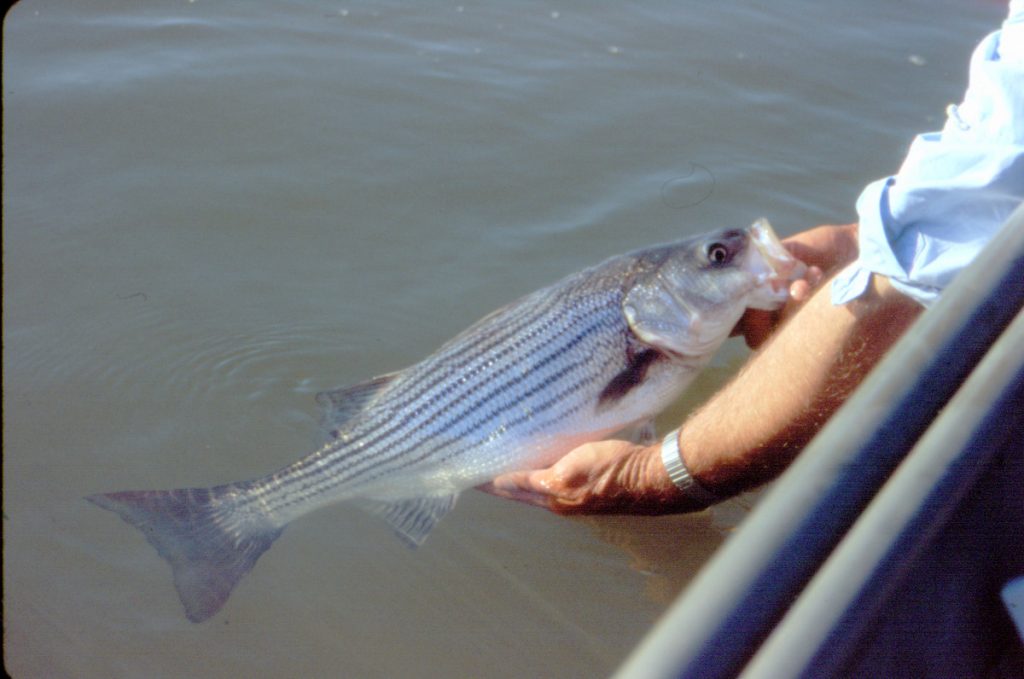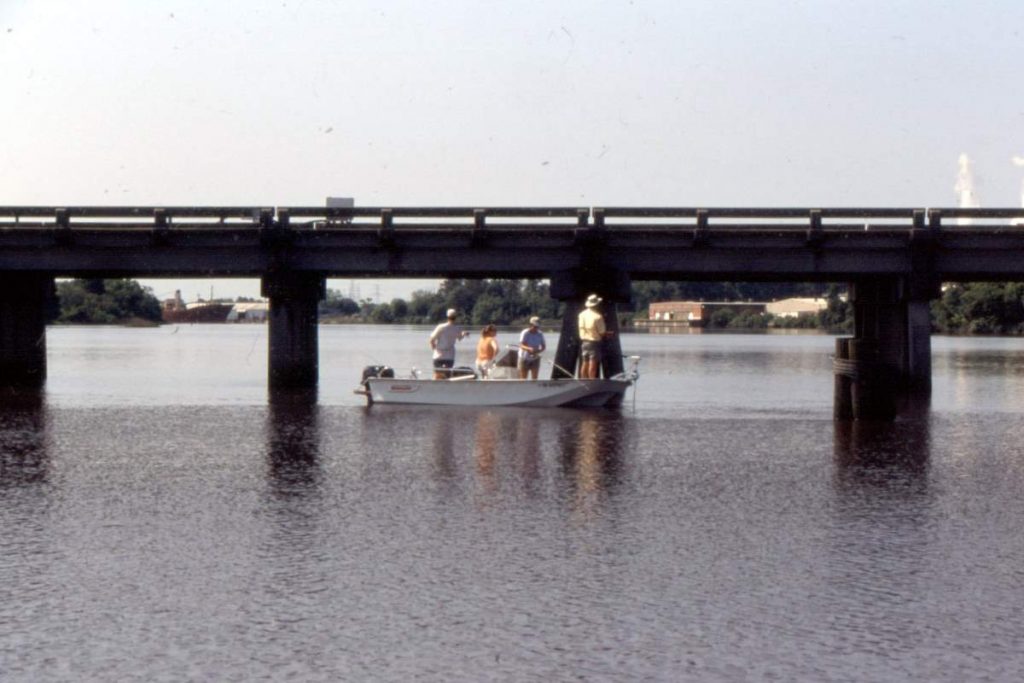Striped Bass in the Brine
Fall 2025
Article and Photos by Jimmy Jacobs
When it comes to striped bass fishing, Georgia is blessed with plenty of options. Reservoirs along the Chattahoochee River from Lake Lanier downstream to Goat Rock at Columbus offer angling for stripers. On the other side of the state, Hartwell, Russell and Clarks Hill are also good for the species on the Savannah River. Additionally, we have a great option for moving water angling in the Coosa, Etowah and Oostanaula River system in West Georgia.
Against that back drop of good angling prospects, targeting stripers in saltwater gets virtually ignored in the Peach State. But we do have striped bass available in the salt and brackish flows of our rivers down on the Georgia Coast.

Farther north along the Atlantic shore, stripers actually run out into the ocean, returning up freshwater rivers to spawn. That is not the cycle you find on our coast. Our striped bass winter in deep-water spots in our inshore marsh-lined rivers. Then in the spring, especially in March, they migrate to where fresh and saltwater meet, to gorge on bait fish prior to spawning farther upriver where the water is fresh but still influenced by tides. When the fish are in that pre-spawn feeding phase is the time when they are most vulnerable to anglers.
This fishing option is available on the Savannah, Altamaha and Satilla Rivers. To take advantage of it, you need to think in terms of concrete and current. That’s because some of the favored places for the fish to hold are around the concrete pilings of highway bridges over those rivers. As to current, it can be moving in either direction, depending on the tidal flow. The stripers like to hold in the eddies on the down current side. When the tide changes, they will move around to the other side of the pilings.
Targeting these fish, which often can reach double-digit weights, is not for the faint of heart. It is “bubba” fishing. You need gear that can take a beating, including boats and trolling motors. These rivers have fast flows, and the water often is up to 20 feet deep where the stripers hold. Anchoring can be difficult, so having enough power in a trolling motor to hold in the current is an advantage.
As to rods and reels, plan on going heavy. These river fish are strong and aided in their fight by the moving water. You will need reels with good drags, heavy-weight lines and stout rods, unless you don’t mind losing fish you have hooked.
When it comes to artificial baits, one local favorite is the Bill Lewis Rat-L-Trap. But these need to be magnum-sized, 2-ounce models to get down to the fish. Either gold or silver generally are the best colors. Another option is a heavy jig of 1/2 to 2 ounces, depending on the current. These can be dressed with bucktail and/or a big plastic grub. Red-and-white is a local favorite color combination. Finally, if you prefer live baits, free-lining shad or big shrimp are your best bets.
The Savannah River offers your best chance for boating a striper of 20 or more pounds. The U.S. 17 bridge over the river is a good place for targeting the fish, but it also is in the center of the port facilities where traffic from large ships is possible. A safer option would be the Houlihan Bridge on GA 25 farther upriver. The Houlihan Boat Ramp is just south of that span.

Targeting the Houlihan Bridge pilings on the Savannah River.
In the Altamaha River drainage, any of the bridges on U.S. 17 or I-95 over the Darien, Champney, Bulter or South Altamaha Rivers can be hotspots. The fish here will run smaller than those on the Savannah.
Down on the Satilla River the striper population is not as prevalent. Your best bet there is the I-95 bridge over White Oak Creek, which is a major tributary of the river.
Jimmy Jacobs is the editor of Georgia Outdoor Adventures, as well as being editor/publisher of On The Fly South. He also is a member of the Georgia Outdoor Writers Association. He makes his home in Marietta with his English setters, Luke and Lulu. He can be contacted at jimmyjacobs@mindspring.com.